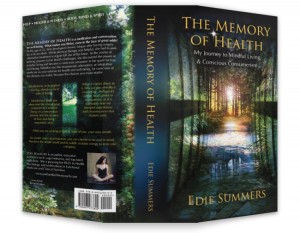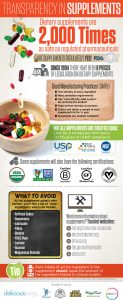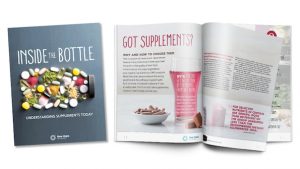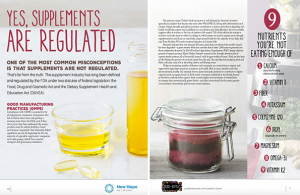

For over 4,000 years, Ayurvedic healers have turned to turmeric—a bright orange root—for its myriad health-boosting properties. From helping to support healthy joints and ease digestion to boosting energy and even managing wounds, Ayurvedic and Chinese medicine practitioners have long turned to turmeric to purify the body and help promote a thriving system. What’s the key? Turmeric’s active ingredient: curcumin.
Today, naturopathic physicians and herbalists are more commonly recommending curcumin to support a healthy inflammation response. Topically, it can be applied to wounds, bruises, and muscle strains to ease pain … and its antioxidant properties mean it’s a great immune-booster and anti-ager.
I happen to love using turmeric to keep my liver running well and to fight inflammation. It also makes a great spice!
If you would like to see a free, digital guide on Turmeric, brought to you by Sabinsa and Delicious Living, click here!
High-quality supplements offered by the natural foods industry changed my life. I am very sensitive to artificial ingredients, GMO’s, fillers, and low-quality ingredients (did you know if you are sensitive to something, it can create inflammation in the body – a big No-No!).
When I developed chronic fatigue, I turned to the natural foods industry to seek answers. I began working in the supplements department of a natural foods store, and taking high-quality supplements (I’ve tried hundreds of them to find which ones work for me), and by learning how to eat well, I improved my energy levels and well-being significantly.
I cannot take prescription drugs, so for me, having access to high-quality supplements was a game-changer.
I take them every day, and they make a BIG difference in the quality of my life and well-being. I discuss supplements in great detail in my book, The Memory of Health.
You can find my book here.



Getting your daily vitamin D dose isn’t just a wintertime concern.
If you have a chronic condition – or are looking to fight your condition, Vitamin D (and don’t forget from sunshine either) may be a key player in your health and immunity.
Vitamin D also helps to create serotonin in your body, and may benefit people on the autism spectrum. If you live in the higher latitudes, you may need to be especially vigilant about getting enough Vitamin D.
Some of my favorite sources are sunshine and eggs. But, supplementation may be critical for many, and you may need the D3 variety. Check out my book, The Memory of Health, for more information on your health and Vitamin D.
Learn why your body needs more year-round with this article brought to you courtesy of Delicious Living.
You’d have to be living in a cave—and therefore vitamin D deficient—to have missed the nonstop news about this remarkable nutrient. Why all the attention? Two reasons: widespread alarm when doctors realized that a huge number of Americans had low vitamin D levels and a concurrent (and continuing) surge in research.
Other than fatty fish and some mushrooms, foods don’t offer a good dietary source of vitamin D. The best source of the “sunshine vitamin” is your own body, but to make it count you must spend 10 to 15 minutes in the sun at least three times per week with your bare, unsunscreened skin largely exposed—which most people don’t do. “The incidence of vitamin D deficiency is due almost entirely to changes in lifestyle,” says Robert P. Heaney, MD, of Creighton University in Omaha, Nebraska. “Our grandparents spent more time outdoors; kids used to play outside. Nearly everyone spent a lot of time outdoors, without sunscreen. These changes in our society have crept up on us.” In this new reality, supplements become a helpful and even imperative approach.
Thanks to increased awareness of its health benefits, vitamin D is evolving from a “winter” vitamin (when your body makes less because the sun is low on the horizon) to a year-round supplement. There are two forms: D2, produced from fungus, and D3, derived from sheep lanolin or fish oil. Though not suitable for vegetarians, D3 is the type your body makes and is far better absorbed than D2 (some research suggests D2 actually lowers D3 levels in the body). Here’s why D is a must in your health arsenal.
Longer life
Because vitamin D plays so many different roles in the body, a deficiency can boost the risk of dying sooner rather than later. A European study of more than 26,000 middle-age and elderly men and women determined that low vitamin D levels correlated to 57 percent greater risk of dying from any cause, including cardiovascular diseases, over periods ranging from 4 to 16 years.
Reduced cancer risk
More than 60 studies have tied adequate vitamin D levels to a lower risk of various cancers, including those of the breast, prostate, colon, and lung, as well as leukemia and myeloma. But the vitamin really shines when it comes to improving the survival of cancer patients, especially those diagnosed with lymphoma, colorectal cancer, and breast cancer. New studies report a 42 percent to 50 percent lower risk of death from breast cancer when women maintained relatively high vitamin D levels.
Pain relief
In a 2014 study, researchers discovered that supplemental vitamin D can ease widespread pain. In another study of 60 Norwegian men and women with chronic pain, including fibromyalgia, researchers found one-fourth were deficient in the vitamin. After three weeks of regular sun exposure, participants’ vitamin D levels rose and they benefited from an average 60 percent decrease in pain. Several previous studies have found that vitamin D supplements reduce low-back pain.
Blood sugar management
A respectable body of research indicates that vitamin D, sometimes in combination with calcium, can prevent or control prediabetes and type 2 diabetes. Both nutrients aid insulin function and glucose regulation. A new study conducted at the University of Massachusetts Medical School found that taking vitamin D supplements for 8 to 16 weeks reduced blood sugar levels by 10 percent. In separate research, vitamin D supplements significantly lowered blood sugar levels and improved insulin resistance in women with gestational diabetes.
Bone and muscle strength
You need vitamin D to make muscle and to get calcium into bone. Researchers in Scotland reported that taking 1,000 IU of vitamin D daily helped older women maintain bone density, while smaller amounts (400 IU) or placebos did not. And in a 2013 study in Osteoporosis International, a combination of vitamin D and calcium intake reduced the risk of hip fractures by 20 percent in women.
Vitamin D dose by age
The ideal vitamin D blood level is 45–60 ng/mL. To reach those levels, follow these guidelines.
Infants and children 12 and younger: 400–1,000 IU daily
Teens age 13–18: 1,000 IU daily
Adults in good health: 2,000–5,000 IU daily
Adults with health problems: 2,000–10,000 IU daily. Obese adults or those on certain medications, such as ketoconazole (an antifungal), may require two to three times more.
Remember: It’s a good idea to talk to your health care provider before starting a new supplement.
Want to know more about how supplements (along with deep nutrition and mindful living and mind-body fitness) keep me well?
Click here and check out my book below as well:
High-quality supplements offered by the natural foods industry changed my life. I am very sensitive to artificial ingredients, GMO’s, fillers, and low-quality ingredients (did you know if you are sensitive to something, it can create inflammation in the body – a big No-No!).
When I developed chronic fatigue, I turned to the natural foods industry to seek answers. I began working in the supplements department of a natural foods store, and taking high-quality supplements (I’ve tried hundreds of them to find which ones work for me), and by learning how to eat well, I improved my energy levels and well-being significantly.
I cannot take prescription drugs, so for me, having access to high-quality supplements was a game-changer.
I take them every day, and they make a BIG difference in the quality of my life and well-being. I discuss supplements in great detail in my book, The Memory of Health.
You can find my book here.



Keep stress at bay and stay calm by making these helpful nutrients a regular part of your diet.
To chill out, your parents’ generation might have chanted “om.” That was so then. Our world is different now—a 24/7 anxiety-generator, what with work, commuting, parenthood, staying connected and trying to cram more than ever into every waking hour.
“Stress generates anxiety, and anxiety keeps our minds in motion,” says Mark Stengler, NMD, of Encinitas, California. “Luckily, we can choose from several natural substances to help us stay calm when the world around us is in turmoil.”
Here are some of my go-to supplements to manage stress: 5HTP, L-Theanine, Lavender Oil (try Nature’s Way to take internally – only take internally if recommended on package!), Citrus Oils (diffused or topically – please dilute with a carrier oil!), Bacopa, and Valerian, Relora, and GABA at night-time.
Those words ring particularly true during the holiday season when long lines, slow traffic, packed schedules and bad weather add more stress to the mix. Meditation, soft music and disconnecting from the stresses of life (at least for a while) can add a semblance of balance. And as Stengler suggests, these supplements can help, too.
B-Complex.
Many Americans don’t get enough B vitamins, making this supplement a good first defense. Researchers determined way back in 1943 that B vitamins had antistress and antianxiety benefits. Since then they’ve discovered the brain uses B vitamins to make neurotransmitters, the chemicals that influence mood. For example, in a study of stressed-out office workers, taking high-potency B-complex supplements eased stress, confusion and anger. A high-potency multivitamin, which contains the B’s, is equally effective.
Dose: Take a daily multivitamin or B-complex supplement with at least 50 mg each of vitamins B1, B2 and B3. If you develop overactive dreams, cut back on B6.
Phosphatidylserine.
Found in brain cell membranes, phosphatidylserine protects against the damaging effects of cortisol, the body’s stress hormone. A study by German researchers found that high doses reduce cortisol and stress levels in men. College students who took phosphatidylserine had better moods, experienced lower stress and had less “neurotic” behavior. In seniors, phosphatidylserine can improve memory.
Dose: Take 200–400 mg daily.
Omega-3s.
We need omega-3s—specifically EPA (eicosapentaenoic acid) and DHA (docosahexaenoic acid)—for brain development as infants and children and to maintain healthy moods as adults. Studies have shown omega-3s have a powerful calming and antistress effect. Medical students at The Ohio State University found that omega-3 supplements led to a 20-percent reduction in anxiety symptoms. Other studies show that omega-3s have broad mood-enhancing effects, diminishing anxiety, depression, irritability and hostility. Good news for vegans: Omega-3 supplements are now available from both fish and plant sources.
Dose: Take 1,000–2,000 mg daily.
Passionflower.
This often-overlooked herb has been shown to effectively minimize anxiety in healthy people and those about to undergo surgery. It also promotes sleep without causing druglike sedation or grogginess.
Dose: Follow label directions whether taking passionflower as a supplement or tea.
To discover more about stress-fighting supplements, click here for the original article, brought to you by Delicious Living!

Did you know that dietary supplements are 2,000 times as safe as regulated pharmaceuticals?
This is good news for someone like me who is sensitive to prescription drugs. While not every “natural” (a meaningless word currently) supplement is necessarily good for you (think herbal stimulants – most are fine, though, don’t get me wrong), supplements are nonetheless regulated and this is very good news.
Issues like transparency, quality, and sourcing are very important as well to many manufacturers of supplements. There are many, many high-quality, highly effective supplements out there!
Get the facts on transparency in supplements with this clarifying infographic brought to you by Delicious Living.

Did you know? Many supplements are synthetic as well, and the industry was originally started or dominated by the drug companies! Look for pharmaceutical grade or, better, yet, food-based supplements when possible. Of course, herbs are not synthetic, although some may be standardized.
But, give reputable companies a chance no matter their method of creating supplements. In this day and age, with depleted soil and skyrocketing stress and chronic conditions, most of us could benefit from high-quality supplementation.



What should you do when tired becomes a way of life?
Take a look at your diet and take advantage of natural supplements to manage chronic fatigue syndrome and ignite your energy.
Look, this is a big topic. I can’t begin to cover all of it even by a landslide in this post. My book, The Memory of Health (see below for the link), goes into great detail about different theories of chronic fatigue, and what worked for me in terms of getting my energy back. I also offer many suggestions of what may work for you, beyond supplements, like self-care, nutrition, mind-body fitness, stress management, etc.
Losing your energy is a complex process, that is affected by many systems in the body. However, I have studied and lived it extensively, and I believe there are answers.
One of the ways that worked for me was taking high-quality supplements. Mindset, lifestyle, mind-body fitness, avoiding irritants (which can lead to chronic inflammation and, therefore, fatigue and brain fog) are some of the other ways I recovered my well-being and energy levels. I go into great, great detail in my book, The Memory of Health.
In terms of supplements, there are many that I use successfully to keep and improve my energy levels. Some of the supplements that work for me have very high-quality nutrition in them, in addition to micro-doses of stimulation like decaf green tea. There is a whole method to this: coupling deep nutrition with a small amount of positive stimulation. I cover this in my book, and this is a topic for another blog, but the point is that strategic supplementation can target sources of fatigue like inflammation.

In addition, there are always new supplements that I find that work for me along the way, like food-based vitamins. The list is way too long for me to list here, but it’s in my book, and I may do another post on exactly what it is I take. If you would like me to do a blog on it, comment below!
Some of my go-to supplements for energy are acai, food-based vitamins, and herbs like Maca.
To find out the specific brands I use, check out my book The Memory of Health (see below).
I will be writing a separate article on fatigue caused by brain fog. However, here are some of the supplements I use for that as well: DMAE, Gota Kola, Ginseng, Fo-Ti, anything anti-inflammatory like Omega 3’s and turmeric.
If you have a chronic condition like CFS, supplements may be crucial to your well-being. Check out this article. by Delicious Living. I covered ways to boost energy with deep nutrition and small amounts of strategic stimulation. Here are some supplements coming up that aren’t stimulating. For a comprehensive list of what I use, check out my book.


Over the past couple of decades, chronic fatigue syndrome (CFS) has gone from an it’s-all-in-your-mind diagnosis to a recognized disease that zaps the energy of an estimated 1 million Americans. It affects four times more women than men, according to the Centers for Disease Control and Prevention. In addition to profound fatigue, which interferes with daily activities, symptoms can include depression, insomnia and brain fog.
Also called myalgic encephalomyelitis, CFS is often triggered by a viral infection, such as the Epstein-Barr (which also causes mononucleosis) and is commonly described as a flu that doesn’t go away. Some patients report symptoms after a chemical exposure, such as to pesticides.
“CFS represents an energy crisis, centered in our body’s mitochondrial energy furnace,” says Jacob Teitelbaum, MD, author of From Fatigued to Fantastic (Avery, 2007). Teitelbaum says he cured himself of CFS through nutrition. I personally believe it’s a bit more complicated than just an energy crisis, and may be more related to the effects of chronic inflammation. I discuss many causes of chronic fatigue and CFS (note: there are different causes of chronic fatigue) in my book, The Memory of Health.
Because the primary CFS symptom is extreme fatigue for more than six months, nutritional treatments should focus on enhancing cells’ mitochondria, tiny structures that burn food for energy. Eating a high-protein diet low in sugars and gluten-containing grains is another approach that, some claim, has helped them combat CFS. Additionally, getting regular, moderate exercise will increase the numbers of mitochondria in muscle cells and boost energy.
Note: if you have CFS, traditional exercise is often not the way to go. However, building chi in your body and enhancing mitochodria still applies. There are other ways to build chi, like yoga, mind-body fitness, QiGong, Tai Chi, meditation, music, laughter, company, sitting by the window, etc. I encourage you to find a way to keep your chi moving, as this is a source of healing and life-force energy.
Here are six nonstimulant supplements, listed in order of likely effectiveness, that can also help you fight fatigue:
Other people swear by some of the following (and click here to see the original article, courtesy of Delicious Living):*
1. B-complex vitamins.
The production of energy in cells depends on most of the B vitamins. Of these, B2 and B3 play central roles in converting food to energy, and B1 and pantothenic acid are also of fundamental importance. These vitamins work in what’s called the Krebs cycle, which can be visualized as an energy-making waterwheel.
Dose: Try a B-complex or multivitamin with 50 mg each of B1, B2 and B3.
2. Coenzyme Q10 (coQ10).
This vitaminlike nutrient was the basis of the 1978 Nobel Prize in chemistry. Research has shown that people with CFS have low coQ10 levels and that supplements can improve energy levels. Some studies combined coQ10 with nicotinamide adenine dinucleotide plus hydrogen (NADH), the form of vitamin B3 found in mitochondria, leading to less fatigue.
Dose: 200 mg of coQ10 or 100 mg of its ubiquinone form, with an optional 5 mg of NADH daily; take coQ10 with a little oily food to enhance its absorption.
3. Carnitine.
This nutrient helps transport fats deep into cells so they can be burned for energy, and it is synergistic with coQ10. One study found that L-carnitine reduced CFS symptoms, and another reported that it improved physical and mental fatigue in centenarians, who tend to have age-related energy issues. However, the acetyl L-carnitine form may be more biologically active.
Dose: 1,000 mg daily.
4. Vitamin C.
You need this nutrient (along with B vitamins) to make your own carnitine. An early symptom of low vitamin C levels is fatigue, which may be related to decreased carnitine production. A recent study found that high doses of vitamin C reduced Epstein-Barr antibodies in people with CFS, a sign that immune responses were normalizing.
Dose: 1,000–5,000 mg (divided doses) daily.
5. Alpha-lipoic acid.
This antioxidant hasn’t been used in human CFS studies, but supplements were reported to benefit a patient with a genetic fatigue disorder. Alpha-lipoic plays key roles in cells’ energy-generating mitochondria, so it makes sense to include it to enhance energy production.
Dose: 200–300 mg alpha-lipoic acid or half that amount of the R-lipoic acid form.
6. Ribose.
Ribose helps form DNA and RNA and also makes the body produce energy. “Our published research showed that the energy nutrient ribose increased energy an amazing average of 61 percent in people with CFS,” says Teitelbaum.
Dose: 2,000–4,000 mg daily.
*I am not diagnosing, treating, or prescribing to you, by reposting this information seen above. Please seek a qualified practitioner to get a full and accurate diagnosis.

High-quality supplements offered by the natural foods industry changed my life. I am very sensitive to artificial ingredients, GMO’s, fillers, and low-quality ingredients (did you know if you are sensitive to something, it can create inflammation in the body – a big No-No!).
When I developed chronic fatigue, I turned to the natural foods industry to seek answers. I began working in the supplements department of a natural foods store, and taking high-quality supplements (I’ve tried hundreds of them to find which ones work for me), and by learning how to eat well, I improved my energy levels and well-being significantly.
I cannot take prescription drugs, so for me, having access to high-quality supplements was a game-changer.
I take them every day, and they make a BIG difference in the quality of my life and well-being. I discuss supplements in great detail in my book, in addition to my story, theories of chronic fatigue, and tactics to get well: The Memory of Health.
You can find my book here.



Even if you have the “perfect diet” (we all know there’s no such thing, right?), chances are you’ll still falling short on some key nutrients. Check out this food for thought on dietary supplements, brought to you by Inside the Bottle.*
Dietary supplements were once popular only with nutrition radicals. But today, they have mass appeal thanks to a growing body of clinical evidence showing that, along with a healthy diet and lifestyle, supplements can support vitality in our fast-paced world. As a result, a walloping 68 percent of American adults now take supplements, according to a 2015 Council for Responsible Nutrition (CRN) survey. Even conventional-medicine practitioners are starting to recognize the importance of nutritional supplementation.
Still, people are left with plenty of questions:
• How do I know if a product is safe?
• Should I believe media headlines?
• Which supplements should I choose?

Safety, efficacy, quality, and traceability are all very important when it comes to something you are ingesting into your body.
Equally important is knowing what types of supplements work for your unique needs.
Here are just some of the reasons you might consider when taking supplements to help your health and enhance your well-being and quality of life, and click here for the full, awesome infographic on this subject!

Reasons You May Wish to Take Supplements:
-
The quality of our soil is depleted
-
Stress
-
To sleep better
-
If you are female
-
If you have an acute or chronic condition
-
If you are immune-comprised
-
If you are very young or elderly
-
If you take certain medications
-
If you are vegan, vegetarian, or lactose-intolerant
Again, click here to see the full infographic on why you should consider taking supplements!
High-quality supplements offered by the natural foods industry changed my life. I am very sensitive to artificial ingredients, GMO’s, fillers, and low-quality ingredients (did you know if you are sensitive to something, it can create inflammation in the body – a big No-No!).
When I developed chronic fatigue, I turned to the natural foods industry to seek answers. I began working in the supplements department of a natural foods store, and taking high-quality supplements (I’ve tried hundreds of them to find which ones work for me), and by learning how to eat well, I improved my energy levels and well-being significantly.
I cannot take prescription drugs, so for me, having access to high-quality supplements was a game-changer.
I take them every day, and they make a BIG difference in the quality of my life and well-being. I discuss supplements in great detail in my book, The Memory of Health.
You can find my book here.

*This article is from Delicious Living and is based on the original article you can find here.



Discover Yoga!
If you are looking to be more flexible, strong, healthy, and relaxed, yoga may be just the exercise you’ve been looking for. The full benefits of yoga have not yet been determined. Yet there is growing evidence to suggest that yoga works to enhance physical health, stress-coping skills, and mind-body awareness among other benefits, according to the National Institutes of Health.
Yoga and other forms of mind-body fitness are my GO-TO daily practices to revitalize my mind, body, and spirit! Give yourself the Gift of Yoga!
Millions of people also believe in the power of yoga to improve health physically, mentally, emotionally, and spiritually. It can strengthen, tone, and align your body, improve your stamina, soothe your nerves, calm your mind, and may alleviate anxiety and depression. Better yet, the benefits of yoga seem to increase with time and consistency of practice.
September is National Yoga Awareness Month. This campaign was created to increase awareness about yoga and its alleged health benefits. One way you can learn about yoga is to take advantage of the One Week Free Yoga classes offered in the months of September and October at over 1500 participating yoga studios across the country. You can find out more here:
http://yogamonth.org/yogamonthcard/
Yoga is Good for Your Body, Mind, & Soul
Yoga is much more than just great exercise!
Yoga Is…
Physical postures
Breathing techniques
Tools for Meditation & Stress Reduction
Research suggests that yoga may:
For Your Body
- increase endurance
- help you to lose weight
- lower your cholesterol
- improve your posture
- increase lung capacity
- improve your muscle tone
- strengthen your bones and joints
- reduce heart rate and blood pressure
- improve mood and sense of well-being
- improve muscle relaxation and body composition
- promote the relaxation response and reduce stress levels
- help with conditions such as anxiety, depression, and insomnia
- strengthen core muscles, and tone/lengthen all muscles (which may reduce back pain)
For Your Mind
- enhance mental acuity
- lower your stress levels
- help you to see the bigger picture
- deepen your mind/body connection
- give you a sense of peace as things are now
For Your Soul
- give you spiritual insight
- yoga has been called “moving prayer”
- experience a sense of felt connection with all living things (enlightenment)
In order to get the most out your yoga experience, you should wear comfortable, loose-fitting clothing, bring a yoga mat, and refrain from eating too much or not at all before you venture to a class. It’s best to try yoga first in a live class vs. your Xbox 360 so you can learn the poses correctly. Connecting with others can be a big part of the yoga experience as well. Look for classes at your local YMCA, gym, community center, or a studio that specializes in yoga.

Types of Yoga
Hatha Yoga
Hatha Yoga is the physical part of yoga. It is the most popular type of yoga practiced in Europe and the United States. It is generally very basic yoga, and incorporates poses or postures (also called asanas), breathing, and meditations. Hatha yoga can be very mellow, and therefore is very popular and great for beginners. Some classes are listed as hatha yoga. Others maybe off-shoots of hatha yoga, such as the types of yoga listed below. Be sure to check which type of yoga class you are taking if you are just starting out or have health considerations.
Other Hatha Yoga Classes
- Bikram is “hot” yoga, practiced in a room with a temperature of at least 100 degrees. It focuses on building muscle and stamina and can be very cleansing for the body as well.
- Ananda yoga focuses on gentle postures and preparing the body and mind for meditation.
- Ashtanga is the “athletic” or “power” yoga. It is not recommended for beginners. It is the most demanding type of hatha yoga.
- Vinyasa is another active form of yoga that focuses on the coordination of breath and movement, and can be physically and mentally challenging. Vinyasa is similar to ashtanga yoga, but perhaps to a lesser degree. It is a very popular type of yoga.

- Inyengar was created to help with injuries or to improve structural imbalances. It focuses on precise alignment of poses and uses props like blocks, blankets, and chairs.
- Kundalini focuses on poses, meditations, breathing techniques, and chanting to awaken life force or energy at the base of the spine.
Precautions with Yoga*
- Yoga is generally considered to be safe in healthy people when practiced appropriately. Studies have found it to be well tolerated, with few side effects.
- People with certain medical conditions should not use some yoga practices. For example, people with disc disease of the spine, extremely high or low blood pressure, glaucoma, retinal detachment, fragile or atherosclerotic arteries, a risk of blood clots, ear problems, severe osteoporosis, or cervical spondylitis should avoid some inverted poses.
- Although yoga during pregnancy is safe if practiced under expert guidance, pregnant women should avoid certain poses that may be problematic.
* reprinted with permission by the National Institutes of Health
Yoga and Back Pain
Back pain is such a common condition these days that many people seek relief any way they can. Sitting at your desk all day can put constant pressure on your lower spine or flatten out its natural curve. Try an ergonomic chair, a balance ball, or even standing up some of the time while you work and see if the changes help. Make sure you take micro-breaks as well, not only for your back but for an overall reboot. Proper posture, staying active, and keeping your core muscles strong are all back care basics. Yoga incorporates many of these principles naturally, and seems to show great results for many people with back pain. Here is how yoga may help you as well:
- It can strengthen your core muscles which is critical for proper back support
- It can increase blood and oxygen flow to your back which can help it to regain balance
- All yoga is good for your back, as all poses strengthen yet also lengthen all of your muscles, creating support and structure for your spine, and therefore your back.
- Yoga can remind you of the connection between your mind and your body. The more you are aware of your body, the greater you have a chance of addressing conditions.
- Yoga relaxes you, and many people unconsciously hold tension in their necks or back.
Yoga for Kids
According to a 2007 National Health Interview Survey over 1.5 million kids are now participating in yoga classes. Kids can love yoga just as much as you do. The key is to find a class that makes it fun for them. Check out www.rainbowkidsyoga.net for ideas or classes in your area. Kids are naturally flexible as well, making it easy for them to learn poses. In India, they start kids with yoga at around age eight learning poses. At around age twelve they introduce kids to the meditative side of yoga. Learning how to de-stress through poses or meditation can be an invaluable skill for kids to learn in order to thrive in our modern world. Many kids will want to do what you are doing, including yoga. Since yoga can be as much about community as it is about connecting with your body, mind, and soul, introducing them to what you love may be a natural, rewarding fit.
Did You Know?
Yoga means “union” in Sanskrit, the ancient language of India. When you focus on your breathing, you unite your mind, body, and spirit. The vision of Yoga is to be peace and connect to the highest Source. You can BE yoga, even just in the way you live, breathe, and BE in your life.
Yoga may date back as far as 5000 years. It was originally developed to cultivate spiritual attitudes and discipline through foundations of yoga called Sutras.
One of the Sutras is Samadhi, which means enlightenment. Some say the ultimate goal of yoga is to achieve enlightenment, or tranquility of mind.
Yoga is a way of BEING, a way of Life, and You have the Power and Ability to participate on Your Terms in one of the most LIFE-CHANGING practices on the PLANET! Namaste to you on your Journey in Discovering the Flow and Power of True Yoga!

The Author
Edie Summers is an author, executive, wellness coach, yoga instructor, and top-rated radio host. She is pursuing her Ph.D. in Health Psychology, and certifications in Functional Medicine and Clinical Nutrition. Her new book is The Memory of Health. You can find it here: http://amzn.to/2aP3AbA
The Memory of Health is a meditation and conversation on health and well-being. What makes you thrive, even in the face of great odds? What makes you come alive?
At the age of 22, Edie developed chronic fatigue after having surgery for a ski accident. While physical therapy was helpful, she had to seek alternative treatment to regain full use of her knee. In the course of seeking answers to her health challenges, she discovered the power of mindful living and became a conscious consumer in her quest for true well-being.
Whether you like mainstream, alternative, or integrative medicine as your solution for health and well-being, be conscious of the choices you make, because the choices you make matter.
The choices you make matter.™

Discover more about yoga! Curious about yoga as a practice and even art form? Click on this link to experience YogaDance and to find the BEST in yoga practitioners!



Are You A Sensitive Person That Burns Out Easily? Are You Running on Empty or Are You Exhausted from ME/CFS? Join Us LIVE for Answers, next Friday, August 26th @ 12 pm PST! Click the link to sign up for Burned Out to Breakthrough!™
Do You Have Trouble Giving Yourself Permission to Put Yourself First?
Do You Feel Guilty For Not Fully Being There for Your Kids, Partner, Yourself, or Your Job? Learn How To Give Yourself Permission to Put Yourself First!
Are You Sensitive Person or Do You Burn Out Easily?
Are you sleep deprived? Are you running on empty? Do you feel bottomed out? Do you feel pulled in too many directions? Learn 7 Tips & 3 Immediate Action Steps to Reboot, Harness Your Energy, & Reclaim Your Well-Being!
Have you been diagnosed with ME/CFS/SEID MS, Lupus, Fibromyalgia or a Chronic Condition?
We will cover Edie’s book, The Memory of Health, on her journey through ME/CFS/SEID and back. Find pieces of the puzzle that may help you to gain ground with your diagnosis, including some theories of ME/CFS/SEID.
Click the link below to join us LIVE!
After you sign up, feel free to submit your questions answered on burnout, chronic fatigue, or ME/CFS/SEID! I will be answering some questions LIVE on the webinar!
https://expertise.tv/webinar/burned-out-to-breakthrough-b08c92da-9f7c-4c77-a684-244c215867a2/landing
























Recent Comments